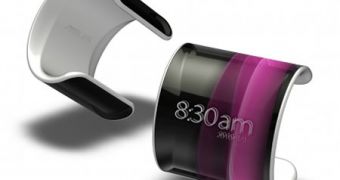As we mentioned in some of our previous articles, ASUS had one of the most impressive booths at this year's CeBIT computer show in Hanover, Germany. The Taiwanese company managed to steal the show by introducing a couple of new products that combined designed with functionality. The e-book reader was one of the main attractions at the company's booth, but it wasn't the only one. As we'd seen for ourselves, ASUS wanted to show that it had become more than just a motherboard manufacturer, which is why it showcased one of its latest design projects, Waveface.
If you kept a close eye on what had been happening during the show, you might have caught a glimpse of what Waveface represented for the Taiwanese company. In essence, Waveface is a project focused on providing users with a perspective on future technologies, which could be adopted by consumer products sooner rather than later. On that note, we were lucky enough to get an insight into what the Waveface project was meant to achieve.
Basically, the Waveface project is ASUS’ way of showing that it wants to be seen as a company that can bring innovation in a number of segments. The design of the devices that were showcased during CeBIT in Hanover, last week, is somewhat futuristic. Nevertheless, the company believes that, in three to five years, some of these devices could come to the market, enabling consumers to take advantage of a new computing experience.
As you can see in the video below, Waveface includes three new devices, one of them looking very familiar to the Nokia Morph concept that was revealed some time ago. The other has been designed as a tablet/netbook computer. However, unlike current convertible netbooks, this solution relies on a special material that can change its shape when electrical charge is being applied. The last of the three is meant to become a home server, integrating all of the user's data into a single, multmedia-ready system. Dubbed Waveface Casa, this device should sense when the user is close and transform into a multimedia station, providing access to all the different controls and features in the home server.

 14 DAY TRIAL //
14 DAY TRIAL //